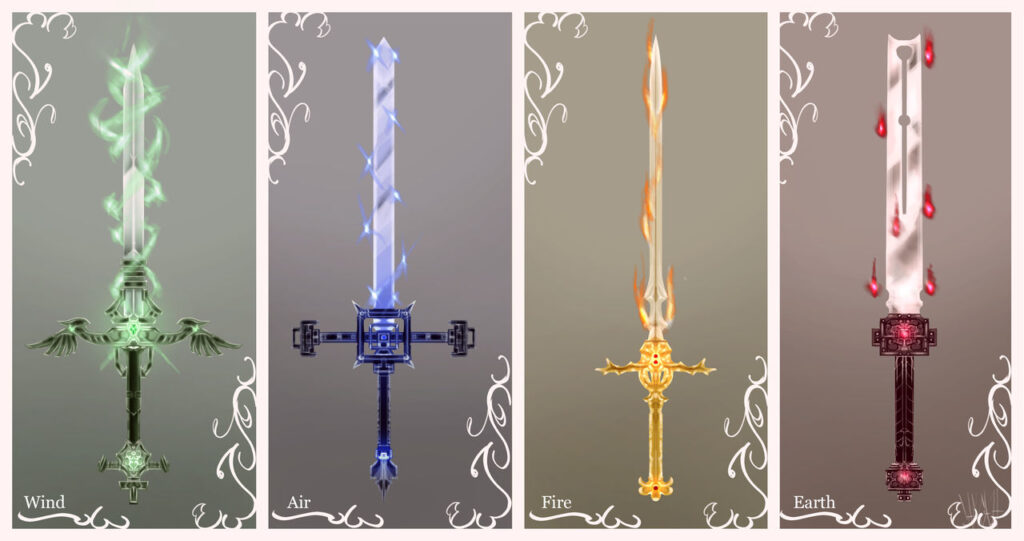The short sword, a smaller but equally deadly cousin to the longsword, has a rich and storied past. It has been a key tool for warriors across centuries, cultures, and battlefields. Whether for close combat, ceremonial purposes, or as a secondary weapon, the short sword holds a special place in military history. In this article, we’ll dive deep into the history, design, and significance of the short sword, exploring its journey through time.
The Origins of the Short Sword
The history of the short sword can be traced back to the Bronze Age, where early humans developed basic metalworking skills to forge their first weapons. Bronze was the first metal used in swordmaking, allowing for the creation of durable, sharp blades. These early short swords were often used by warriors who fought in close combat, relying on agility and precision rather than brute strength.
One of the most notable early short swords was the Greek xiphos, a double-edged, leaf-shaped weapon that was about 20 inches in length. These warriors typically used long spears as their primary weapon, with the short sword acting as a secondary tool when the battle came too close for the spear to be effective.
As civilizations advanced, so did the design of the short sword. The Roman gladius is perhaps one of the most famous examples. The short sword’s length allowed soldiers to strike quickly in close-quarters combat, especially when fighting in the tight formations of the Roman legion. The gladius was instrumental in Rome’s many military conquests and played a significant role in establishing the empire’s dominance.
The Versatility of the Short Sword
One of the key characteristics that made the short sword so valuable was its versatility. This made it ideal for urban warfare, fighting in confined areas such as narrow streets or inside buildings. Its size also made the short sword a useful tool for various combat styles.
In addition to its combat uses, the short sword often served ceremonial and symbolic purposes. Many cultures viewed the sword as a symbol of authority and honor. In medieval Europe, for example, knights would carry short swords as part of their attire, even when they were not expecting to fight. These weapons were often elaborately decorated, with ornate hilts and engraved blades, indicating the status and wealth of the owner.
Evolution Through Time: Medieval and Renaissance Short Swords
During the medieval period, the short sword continued to evolve. While larger swords like the longsword became more popular for heavy combat, the short sword maintained its place as a reliable secondary weapon.
As the Middle Ages transitioned into the Renaissance, sword design began to change once again. With the advent of firearms, heavy armor became less practical, and lighter, more agile swords grew in popularity. The side sword, a lighter and more flexible version of the arming sword, became a favored weapon among the nobility and mercenaries alike.
The Renaissance period also saw the rise of the rapier, a long and slender thrusting sword used primarily for dueling. While the rapier was not technically a short sword, it was often accompanied by a parrying dagger, a small secondary weapon designed to block or deflect attacks. These daggers were shorter than the typical short sword, but they served a similar purpose in close-quarters combat.
Symbolism and Ceremonial Use
As time passed, the practical use of the short sword in warfare began to decline, particularly with the rise of gunpowder weapons in the 16th and 17th centuries. However, the sword remained a powerful symbol of authority, honor, and martial prowess.
In Japan, for example, the wakizashi and katana were part of a samurai’s daisho, or paired swords, which represented the warrior’s honor and social status. Even in times of peace, carrying it was a mark of one’s standing in society.
Modern-Day Short Swords: Martial Arts and Collectibles
In the modern era, this has largely fallen out of use as a combat weapon, replaced by firearms and other advanced technologies. However, the legacy of this lives on in various forms, from martial arts to historical reenactments and collectibles.
Practitioners of kendo, kenjutsu, and other Japanese martial arts often train with short swords like the wakizashi, refining their techniques in close-quarters combat. Similarly, Chinese martial arts schools continue to teach the use of the jian in various forms of kung fu.
For historians, enthusiasts, and collectors, short swords remain prized items. Historical reenactments, museums, and private collections often feature replicas and original versions of famous short swords from various periods.
The Impact of the Short Sword on Popular Culture
In addition to its historical significance, this sword has left an indelible mark on popular culture. From fantasy novels and films to video games, it frequently appears as a weapon of choice for heroes, warriors, and adventurers. Characters in works like The Lord of the Rings, Game of Thrones, and The Witcher often wield short swords, emphasizing their agility, quick reflexes, and skill in close combat.
The short sword’s compact size and versatility make it an ideal weapon for fictional characters who rely on speed and cunning rather than brute force. In many ways, the depiction of it in popular media reflects its historical use, showcasing its effectiveness in fast-paced, high-stakes combat scenarios.
Conclusion
The short sword may be small in size, but its impact on history is monumental. From the battlefields of ancient Rome to the ceremonial halls of feudal Japan, the short sword has played a vital role in warfare, self-defense, and symbolism. Its compact design made it an indispensable tool for soldiers and warriors across cultures, and its legacy continues to be felt in modern martial arts, popular culture, and historical study.







